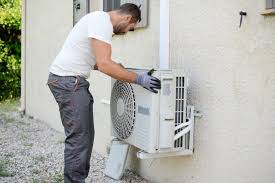 When you first notice a problem with your furnace, try to determine the source of the problem. If it is a combustion fuel furnace, it is possible that the gas valve was turned off or the pilot light has gone out. If this is the case, check the owner’s manual for step-by-step instructions on how to light the pilot light. If the problem persists, call a furnace repair professional. Browse this site listing about furnace repair Newport Beach
When you first notice a problem with your furnace, try to determine the source of the problem. If it is a combustion fuel furnace, it is possible that the gas valve was turned off or the pilot light has gone out. If this is the case, check the owner’s manual for step-by-step instructions on how to light the pilot light. If the problem persists, call a furnace repair professional. Browse this site listing about furnace repair Newport Beach
When troubleshooting a furnace, always remember to turn off power to the unit first. You can do this by tripping the main circuit breaker or by removing the fuse. Then, you can try to reset the thermostat by examining its power settings. In some cases, a problem may be as simple as a short in the wiring.
You can also try to repair your furnace yourself to save money and prevent a costly replacement. To do this, flip the power switch to the “Off” position, remove the burner cover and combustion chamber door. These are usually held in place by two screws. Next, turn on the power switch and the thermostat and test the burners. If the flames are yellow, you may have a dirty burner. You can also check them by breathing on them.
You may also need to check the air intake vent. If the air intake pipe is blocked, this can make the furnace inefficient. Usually, this is located outside the house. If this is the case, you can unblock the air intake pipe to clear the blockage. This will help the furnace function properly. In most cases, a simple air intake vent cleaning can prevent the need for costly repairs later.
In some cases, it is necessary to replace or adjust the blower motor belt. In most cases, the belt needs to be oiled annually or replaced. If you’re not able to do this, you need to call a furnace repair technician. Oil-burning furnaces can be very complex to fix.
To check the air intake filter, turn off the gas and power and check for a dirty or clogged filter. If you detect a bad smell coming from the vents, the filter is probably dirty. If it’s dirty, remove it immediately and call a furnace repair specialist. If the filter is dirty or clogged, you need to clean it or replace it.
Other symptoms that can signal a furnace problem are a yellow flame or a malfunctioning thermostat. These issues can cause a furnace to run inefficiently and cause dangerous levels of carbon monoxide to build up. Fortunately, you can prevent these problems by having a furnace tune-up. A tune-up will prevent costly repairs in the future.
One of the most important parts of your furnace is its air filter. An air filter needs to be changed at least every three months or so. A dirty filter will restrict the airflow of your furnace, causing it to overcompensate and shut down. Also, every furnace should have a carbon monoxide detector. The alarm should be accompanied by ventilation. If the alarm indicates that carbon monoxide is building in your home, you should investigate it immediately.
